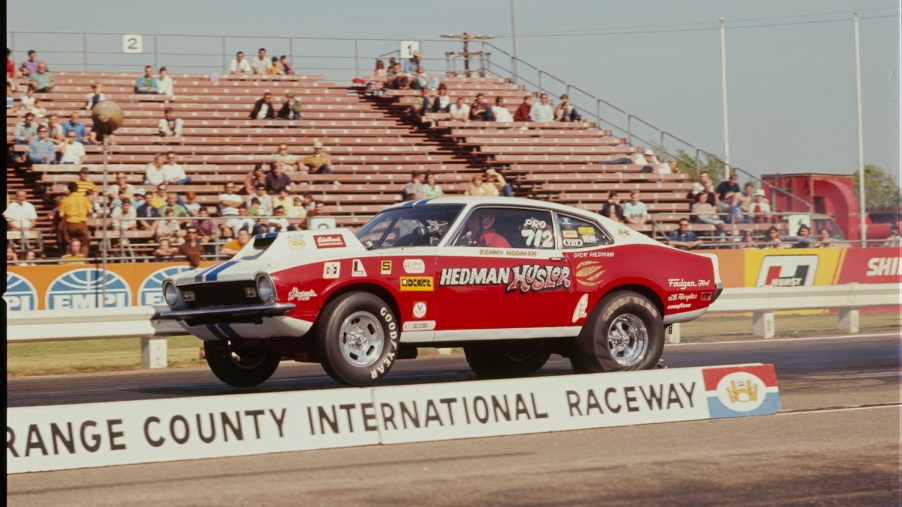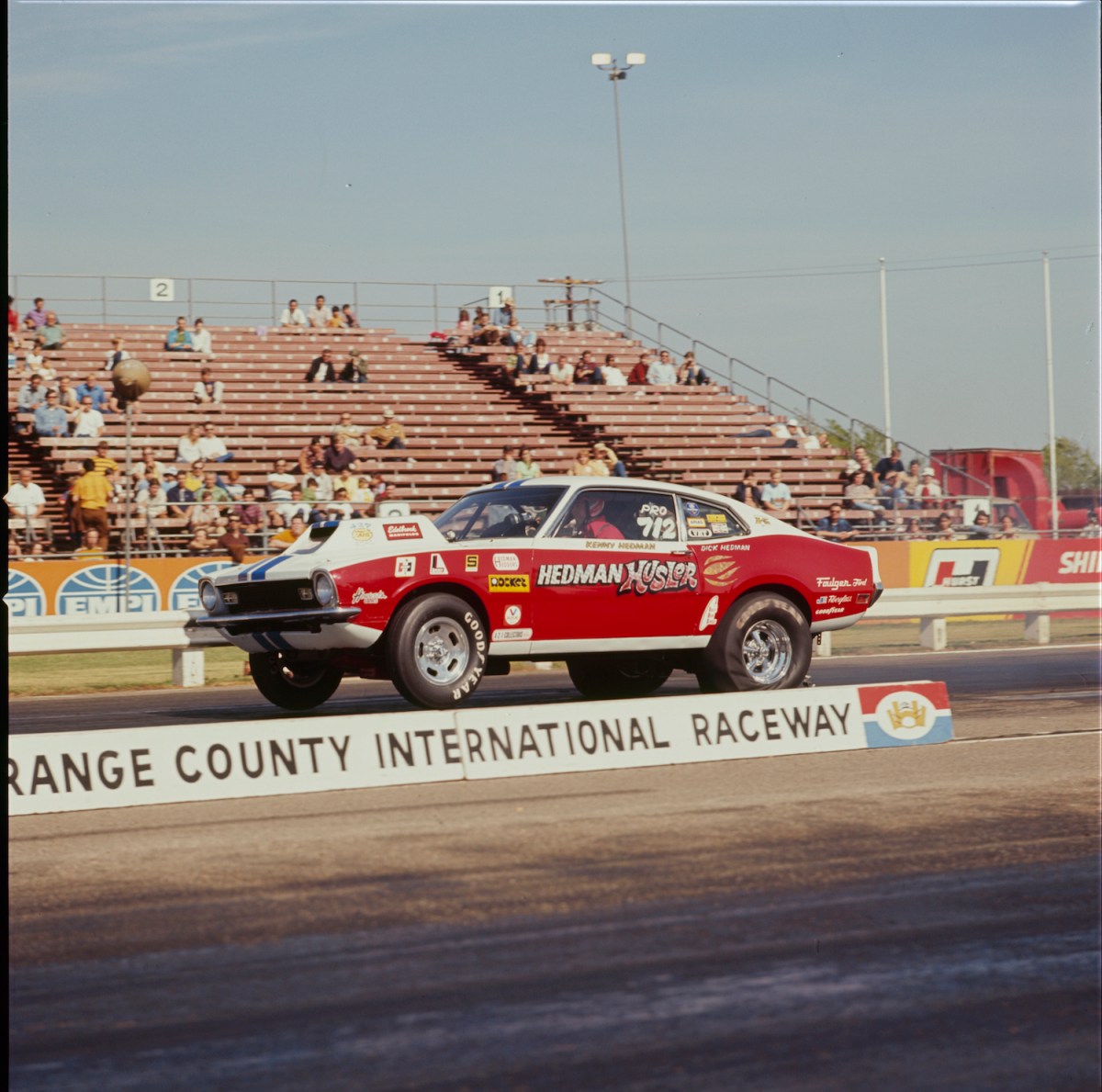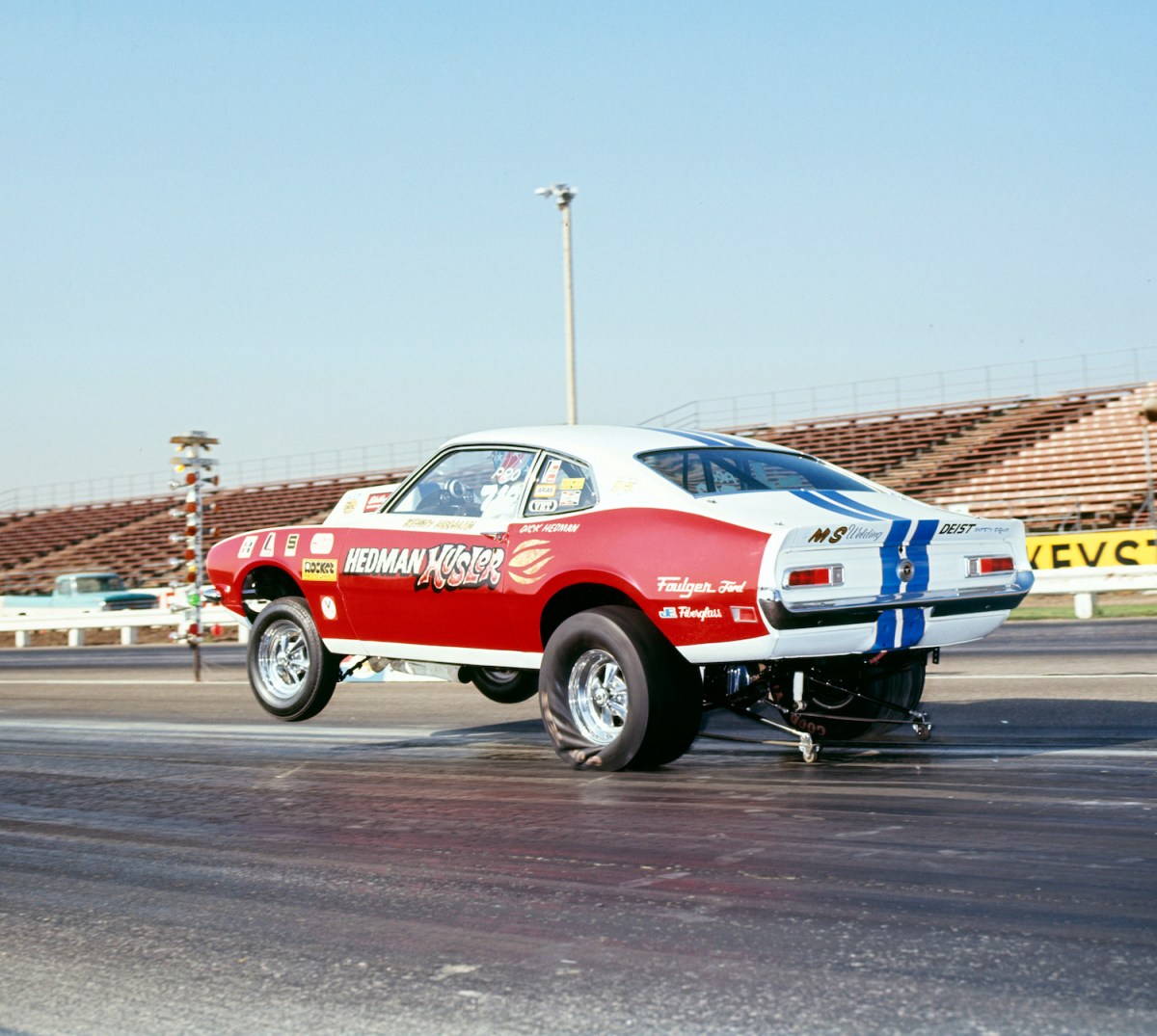
Why the Original Ford Maverick Is Perfect for Drag Racing
Before the truck version, there was the compact sedan Ford Maverick from the 1970s. Drag racing enthusiasts point to mid-’60s Chevrolet Novas as prime examples of drag cars for their compact size and lightweight. However, the Ford Maverick accomplished the same thing with a different look and a more compact platform. With a lightweight body and big enough engine bay to fit a V8, the Maverick makes a great car for drag racing, and here’s why.
What was the Ford Maverick?
Ford released the Maverick in 1970 as a follow-up to the outgoing Ford Falcon. The Maverick had mischievous styling as a compact car and came with a decent powerplant in the 302 cubic-inch Windsor V8. Weight was down as well, under 3,000 pounds for the 2-door variant. The Maverick was smaller than the Nova in every dimension by a few inches, though it kept the same curb weight. Maverick sales almost reached Mustang level, which was a huge breakthrough.
Inside was a bit cramped with bucket seats, but the Maverick could also have a bench seat that opened up the cabin. The car felt light as a feather under V8 acceleration, but steering was a bit vague, accompanied by soft suspension. V8-equipped Mavericks had 210 horsepower, which was a massive step up from the 120-hp inline-sixes that came in the base model.
How to outfit the Ford Maverick for drag racing

First thing’s first. For drag racing, you need power, and the power modifications you can make to the 302 Windsor small-block are plentiful. Aluminum heads, a more aggressive camshaft, and an aluminum intake from Edelbrock can make a massive difference. However, the cylinder heads don’t have to be aluminum as long as they are high-flow heads. Find a wrecked V8 Ford Explorer, and you can find high-flow cylinder heads for much cheaper than a set of new aluminum heads.
Holley makes fuel injection conversion kits for carbureted vehicles, increasing horsepower and offering more consistent results. The Holley kits mix themselves and learn how to optimize the fuel mixture on their own. Forced induction is always an option, but be sure to incorporate some sort of cylinder cooling system like methanol injection.
Suspension and gearing

Believe it or not, there are companies out there like QA1 that make coilover suspension kits for the Ford Maverick. Ranging from $500-800, you can use these kits to adjust compression and rebound and set your Maverick up for the best launch. The next step is axle gearing, which can improve acceleration. Ford sells short gears for various differentials on its website. A 4.10:1 axle ratio is popular among naturally aspirated Ford V8s, while 3.73 is recommended for forced induction.
Beyond engine power, suspension, and gearing, just be sure you have the ability to get the power to the ground with the right tires. Ford Mavericks have many wheel options, and some tire companies make street-legal almost-slick tires so you can even drive this drag Maverick on the street. Don’t forget to have fun with it.


